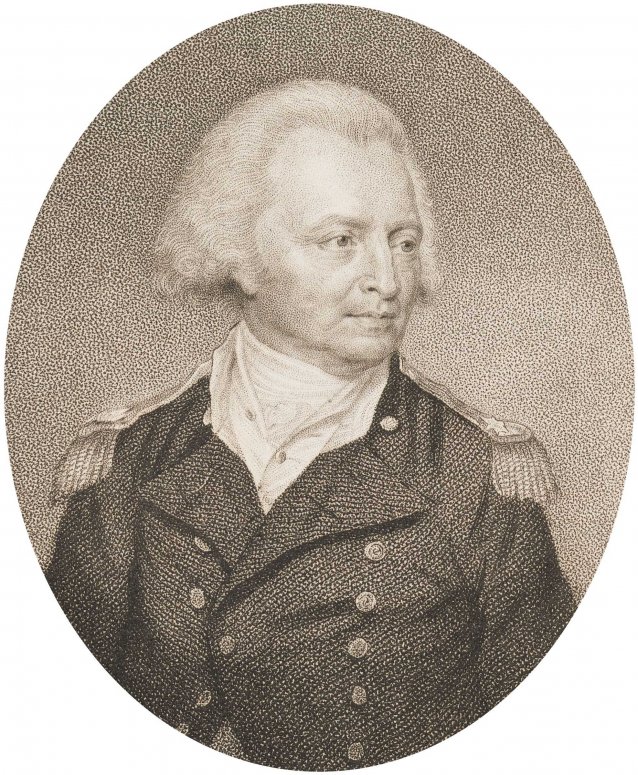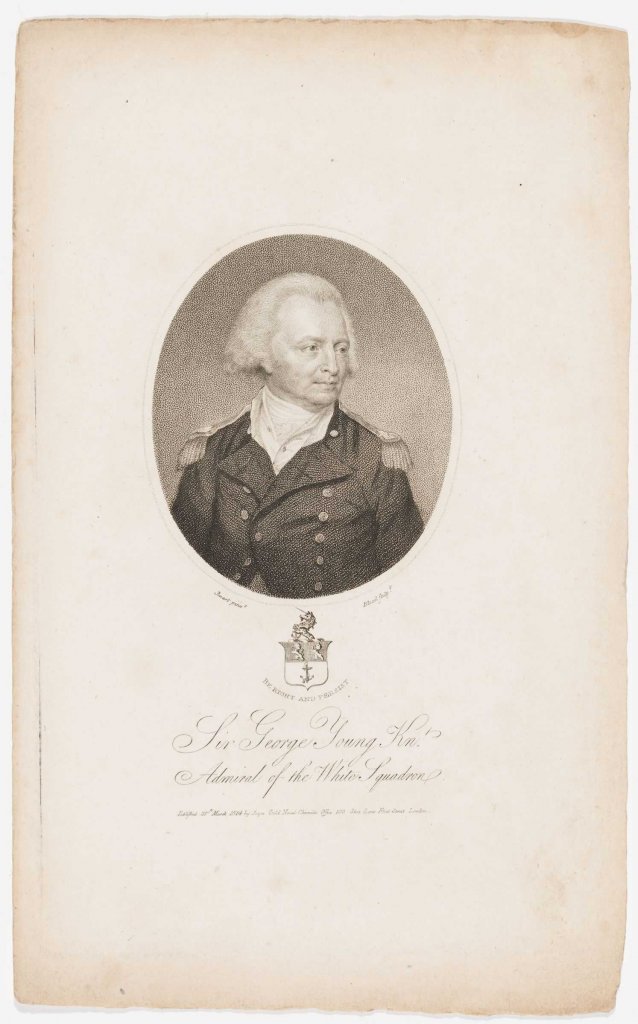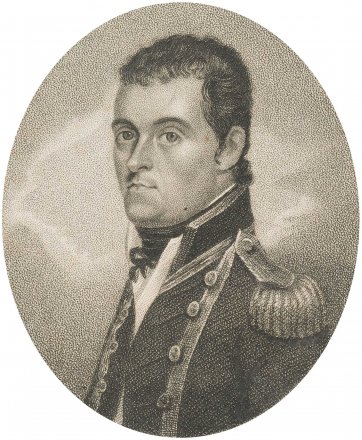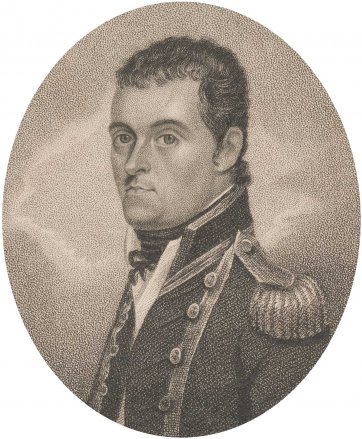Sir George Young (1732–1810), naval officer, first went to sea at the age of fourteen and saw action in Europe and India before joining the East India Company’s marine in 1753. He re-joined the Royal Navy three years later and served in the Seven Years War before being appointed to the command of a squadron of vessels that made four journeys of exploration of the African coast. Such experience saw him elected as a member of the Royal Society in 1781; he was also known for his musical skill and social accomplishments. In the early 1780s, he devised a proposal for the colonisation of New South Wales and in 1784, with diplomat James Matra, presented his idea to the government of William Pitt the Younger. Young believed that Botany Bay, in addition to its appeal as a site for a penal settlement, would provide East India Company ships with a preferable route to China; and saw in New Zealand flax a useful alternative source of hemp for the navy. Young was elevated to Admiral in 1804, but had retired from active service by this time. He died in London in 1810.
Collection: National Portrait Gallery
Gift of Ted and Gina Gregg 2012
The National Portrait Gallery respects the artistic and intellectual property rights of others. Works of art from the collection are reproduced as per the
Australian Copyright Act 1968 (Cth). The use of images of works from the collection may be restricted under the Act. Requests for a reproduction of a work of art can be made through a
Reproduction request. For further information please contact
NPG Copyright.



















